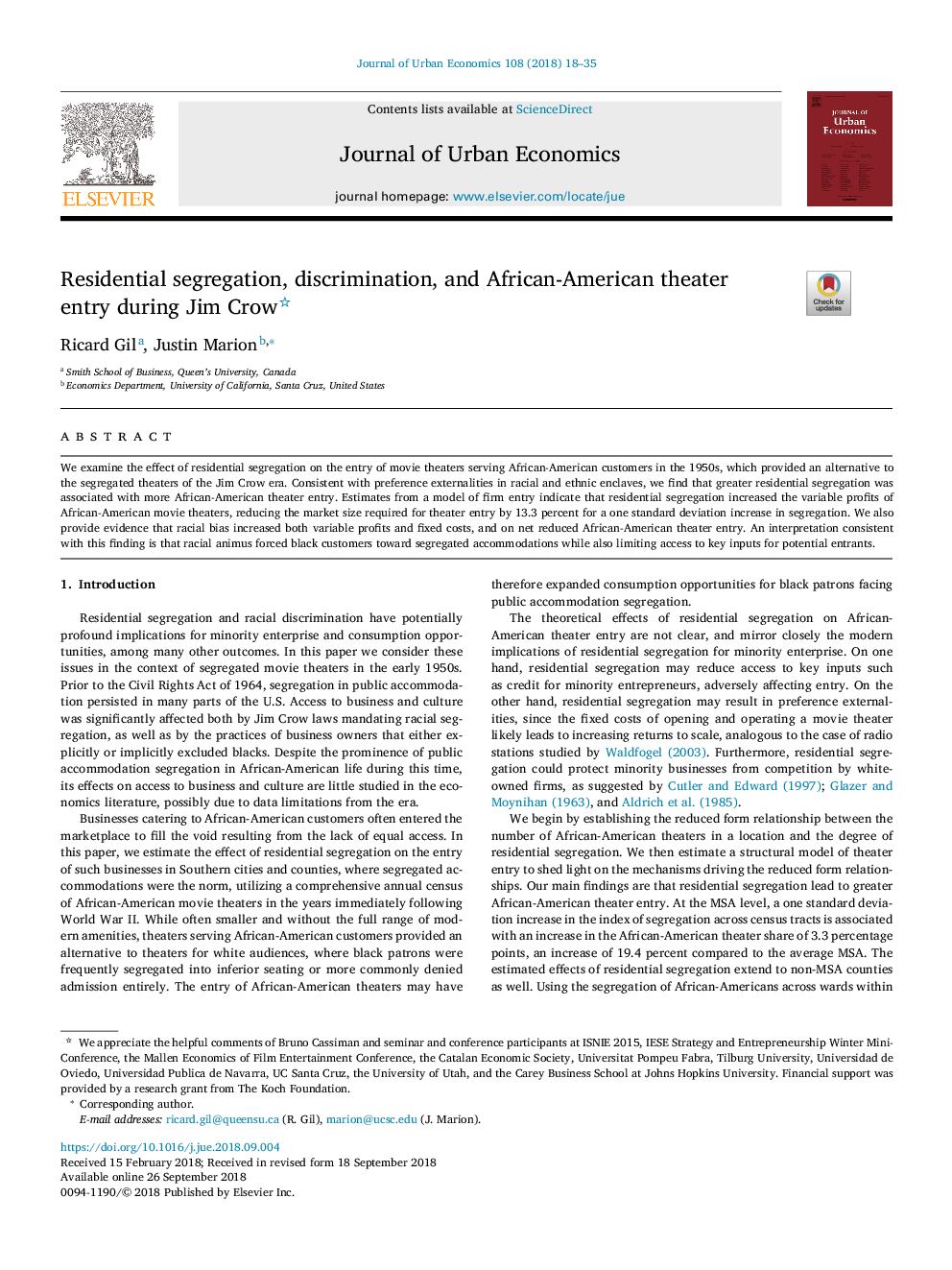| Article ID | Journal | Published Year | Pages | File Type |
|---|---|---|---|---|
| 11020445 | Journal of Urban Economics | 2018 | 18 Pages |
Abstract
We examine the effect of residential segregation on the entry of movie theaters serving African-American customers in the 1950s, which provided an alternative to the segregated theaters of the Jim Crow era. Consistent with preference externalities in racial and ethnic enclaves, we find that greater residential segregation was associated with more African-American theater entry. Estimates from a model of firm entry indicate that residential segregation increased the variable profits of African-American movie theaters, reducing the market size required for theater entry by 13.3 percent for a one standard deviation increase in segregation. We also provide evidence that racial bias increased both variable profits and fixed costs, and on net reduced African-American theater entry. An interpretation consistent with this finding is that racial animus forced black customers toward segregated accommodations while also limiting access to key inputs for potential entrants.
Related Topics
Social Sciences and Humanities
Economics, Econometrics and Finance
Economics and Econometrics
Authors
Ricard Gil, Justin Marion,
